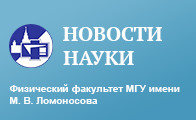This article discusses experimental data and their theoretical interpretation concerning the volume magnetostriction, spontaneous magnetostriction, variation of magnetization under the action of pressure, and elastocaloric effects in rare-earth metals, as well as their alloys and compounds. Particular attention is paid to the region of phase transitions. The volume magnetostriction $\omega$ of true magnetization was investigated near the Curie temperature $\Theta$ as a function of magnetization and determined from the change of magnetostriction under the action of pressure. From these data we obtained the dependence of the exchange integrals on the unit cell volume. Giant volume magnetostriction and magnetoelastic elastocaloric effects were discovered in the rare-earth metals and alloys in the region of their magnetic phase transitions. It was established that giant volume magnetostriction in RCo$_2$ compounds is caused by a critical increase of the magnetic moment of the $3d$ sublattice of cobalt in magnetic fields that exceeds the critical field at ${T>\Theta}$. Giant volume magnetostriction in R$_2$Fe$_{17}$ compounds near the temperature $\Theta$ is shown to occur due to strong deformational dependences of exchange interaction and the value of the $3d$ electron bandwidth.
75.30.Sg Magnetocaloric effect, magnetic cooling
75.30.Kz Magnetic phase boundaries
71.20.Eh Rare earth metals and alloys
Department of General Physics and Condensed Matter Physics, Faculty of Physics, Moscow State University, Moscow, 119991, Russia



